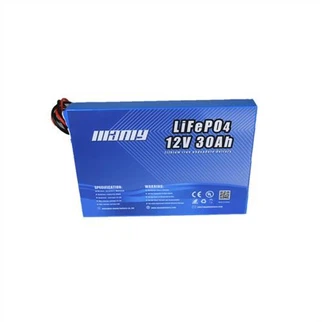Agricultural robot is the use of robots in agricultural production, a new generation of unmanned automatic operation machinery that can be controlled by different program software to adapt to various operations, can sense and adapt to crop types or environmental changes, and has artificial intelligence such as detection (e.g., vision, etc.) and algorithms.
Fertilizer application robot
The robot introduced by researchers of an agricultural machinery company in Minnesota, USA is unique in that it will apply fertilizer in the right amount from the actual conditions of different soils. Its accurate calculation reasonably reduces the total amount of fertilizer applied and reduces agricultural costs. As a result of the science of fertilizer application, the quality of groundwater has been improved.
Field weeding robot
German agricultural experts used a combination of computers, global positioning systems (GPS) and a dexterous multi-purpose tractor to develop a robot that can accurately apply herbicides to weed. First, an agricultural worker leads the robot through the field. When it reaches a plot with a lot of weeds, the GPS receiver on its body displays a coordinate location map that identifies the location of the weeds. The agricultural workers first enter this information into a portable computer in sequence on the spot, and then return to the field and transfer the above information data to a computer on the tractor. When they drive the tractor into the field later, the weeding robot will closely monitor the travel position. If it comes to a weeded area, the corresponding part of its on-board rod sprayer is immediately activated, allowing the chemical herbicide to be sprayed exactly where it is needed.
Vegetable field weeding robot
The vegetable field weeding robot developed by British scientists uses a camera and a computer combination device that identifies images of weeds, vegetables and soil, using camera scanning and computer image analysis to advance the weeding operation in layers. It can work continuously around the clock, weeding without erosion damage to the soil. Scientists are also ready to build on this, and research with the matching weed control machinery to replace herbicides. Harvesting robot U.S. New Holland Agricultural Machinery Company invested $ 2.5 million to develop a multi-purpose automated combined harvesting robot, the famous robotics expert Red Whitaker presided over the design work, he had successfully manufactured to monitor the ground distortion, earthquake forecasting and detection of volcanic eruption activity signs of the space shuttle special robot. Whitaker's fully automated combine harvesting robots are well suited to harvesting crops in large, neatly planned fields in some of America's exclusive farming areas, some of which are more than a dozen times more productive than the average farm.
Citrus picking robot
The robot, invented by Spanish scientists, consists of a tractor equipped with a computer, an optical vision system and a robot hand, which can determine from the size, shape and color of the oranges whether they are ripe or not, and decide whether they can be picked. It works very fast, picking 60 oranges per minute, while by hand can only pick about 8. In addition, the tangerine picking robot can classify the picked tangerines by size immediately through the robot equipped with a video device.
Mushroom picking robot
The United Kingdom is the world's largest mushroom producer, and mushroom farming has become the second largest horticultural crop. According to statistics, the annual mushroom picking volume by hand is 110,000 tons, which is very profitable. In order to improve the speed of picking, so that people gradually get rid of this heavy farming work, the British Sears Institute of Agricultural Machinery has developed a mushroom picking robot. It is equipped with a camera and visual image analysis software, used to identify the number of mushrooms picked and belong to which level, so as to determine the operating procedures. After an infrared rangefinder on board determines the height of the mushrooms in the field, the mushroom picking robot automatically reaches for the picking area, bends and twists as needed, and puts the picked mushrooms into the transporter that follows it in time. It can pick up to 40 mushrooms per minute, twice as fast as a human.
Fruit sorting robot
Sorting and classifying various fruits is an essential agricultural task that often requires a lot of labor. Researchers at the Cilso Institute of Agricultural Machinery in the UK have developed a robust and easy-to-use fruit sorting robot that automates fruit sorting. Using a combination of photoelectric image recognition and lifting sorting machinery, it can work in wet and muddy conditions, distinguishing large tomatoes from small cherries for sorting and shipping, and sorting potatoes of different sizes without bruising the skin of the fruit.
Tomato Harvesting Robot
The Japanese tomato harvesting robot uses a color CCD camera as a vision sensor to distinguish fruits from stems and leaves based on RGB components, in response to the red color of ripe tomato fruits.
Strawberry picking robot
The Japanese National Agricultural and Food Research Institute has invented a strawberry picking robot. The robot is equipped with a set of cameras that can accurately capture the location of strawberries, and software that ensures that the robot picks ripe strawberries based on their redness. Although the robot can only pick strawberries, it can be modified to pick other fruits, such as grapes and tomatoes. The robot's time to pick a strawberry is 9 seconds, and if it is used on a large scale and can maintain the picking efficiency, it can save farmers 40% of the picking time.







